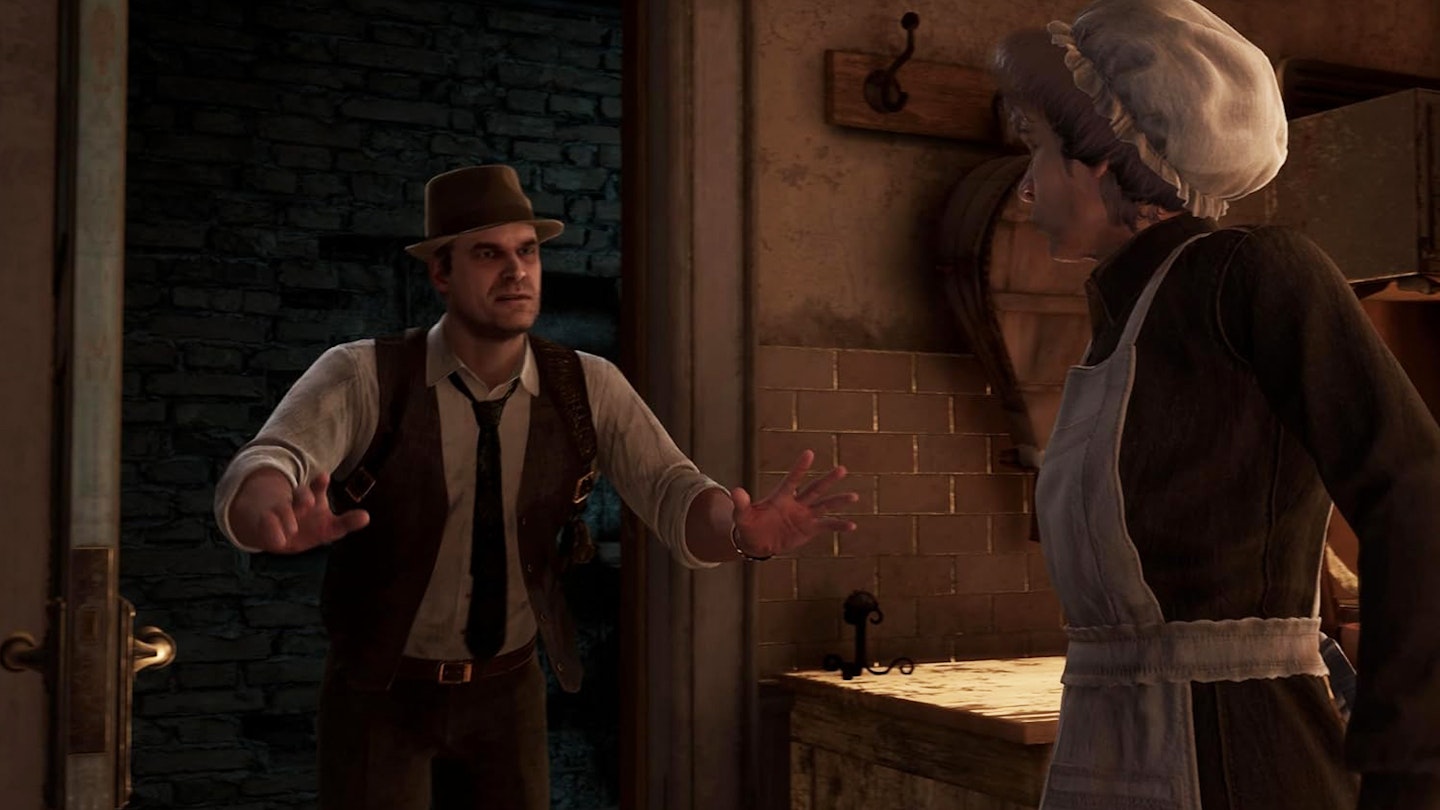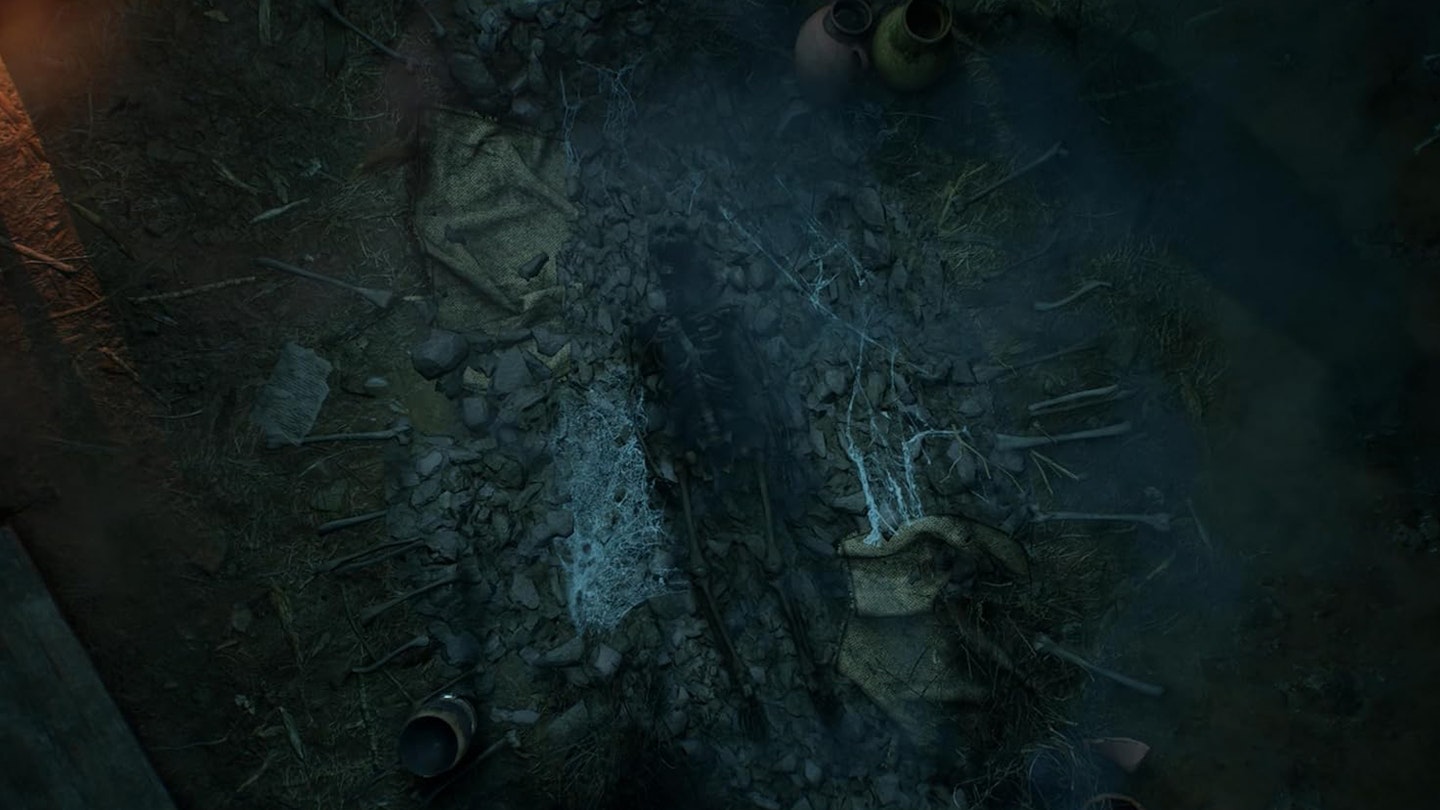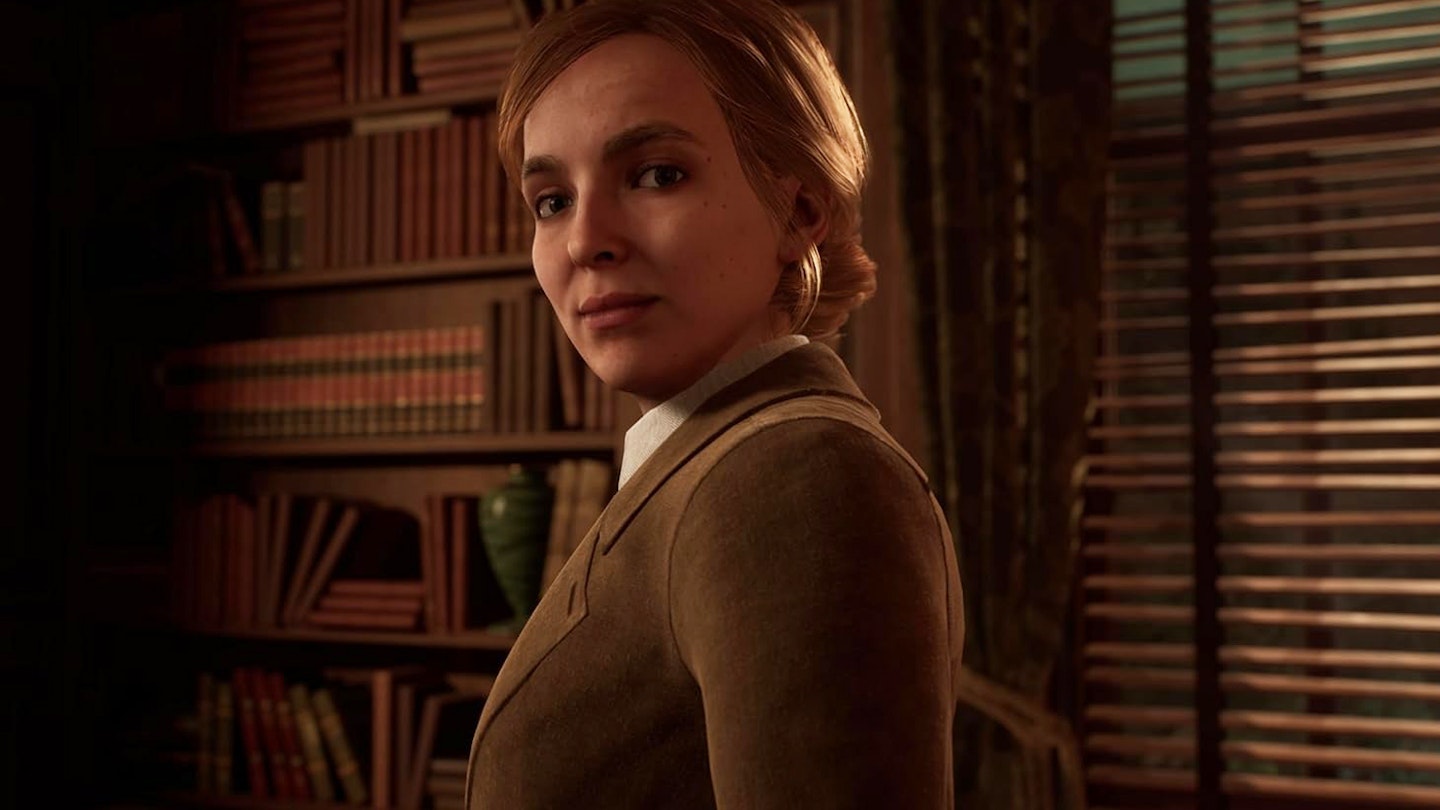Platforms: PS5, Xbox Series X|S, PC
Louisiana, the 1920s: private investigator Edward Carnby and his client Emily Hartwood venture to a foreboding manor, deep in the bayou, to investigate the latter's eccentric uncle. Instead, they uncover a world of cosmic horror that threatens our very reality.
So it was in 1992, when the original Alone In The Dark made its bow on PC – and so it is in 2024, with this latest attempt at reviving the pioneering horror series. But this is as much a remix as a remake, expanding and enhancing on the source material in numerous ways.
Foremost is adding a dash of star quality, with its two leads performed by David Harbour and Jodie Comer. Harbour's version of Carnby is perhaps the biggest change from the original, shifting from a bitter but Holmesian gentleman detective to grizzled private dick. It's a move that fits the actor – his take here being a more noirish Hopper from Stranger Things – but also serves as a better contrast to Comer's Hartwood, a wispy intellectual plagued by her own demons. The pair have great chemistry, exhibited twice over as events and cutscenes shift depending on which protagonist you're playing as. Don't worry about missing anything, though — you'll need to play through the game as each to uncover the full story.

Anyone who recalls the classic incarnation will find some pretty wild departures in that story though, including the appearance of characters from later games in the original trilogy, such as Grace Saunders, but mostly centred on the mysterious Jeremy Hartwood. Back in 1992, it was his suicide that first drew Edward and Emily to Derceto Manor, a former plantation. Here, the once-abandoned estate is repurposed as an asylum, Uncle Jeremy is one of its patients, but missing after ranting about a sinister "Dark Man". His frantic journals and disturbing artworks lead to a strange talisman, transporting Emily and Edward to a disturbing shadow world as they seek him out.
Transitioning between realities forms the central gameplay loop of this modern Alone In The Dark, which proves to be more a tense adventure game than traditional survival horror. Sections in Derceto – a labyrinthine sprawl of rooms and facilities all steeped in a sinister Southern Gothic aesthetic – lean more towards puzzle-solving and investigation, while alsso sparking interactions with the unlikely residents and suspicious staff of the facility. In the shadow worlds accessed through the talisman, Emily and Edward are faced with horrific ghouls, misshapen mounds of flesh and juddering bone – designed by frequent Guillermo del Toro collaborator, Guy Davis – stalking them as they pursue answers. The division between realities blurs, though, the walls between them crumbling – walk into a new room in Derceto, and it might suddenly shatter, twisting into its own dark reflection briefly, before snapping back into place.
Thoughtful approaches to design and lighting help build a near-tangible sense of place.
It's one of the game's smartest tactics in maintaining a lingering sense of fear. While Alone In The Dark never quite cements itself as a masterpiece of horror, that constant uncertainty over what – if anything – is real, or when the eerie walls of Derceto may give way to Lovecraftian realms, ensures players are always on their toes.
Developer Pieces Interactive has crafted a deeply immersive world, too – patient and staff rooms reflect and hint at the personalities and histories of their inhabitants, while notes and clues found during the course of the game are read aloud by their respective character's voice actors, pulling players further into their web of relationships and schemes. Although it's not the sharpest looking game in places – bar Harbour and Comer's painstakingly recreated likenesses – thoughtful approaches to design and lighting help build a near-tangible sense of place, across both realities.
It's probably for the best that the focus is largely on the exploration and world-building side though, since combat feels clunky throughout. On the one hand, you're not meant to gun down every monster you encounter, with ammo proving vanishingly rare to reinforce this, while melee weapons break easily. However, stilted movement, a dodge that barely takes effect, and no defence whatsoever against monsters should you be unfortunate enough to lack in weaponry, mean you're too often vulnerable and unable to do anything about it. An attempt at stealth mechanics, ostensibly to avoid the ghouls entirely, falls flat, too – throwing bottles or bricks to distract enemies never seems to have the intended effect, no matter how many times the game prompts you to do it.

Deliberately restrictive combat is perhaps a nod to the series' survival horror roots – Alone In The Dark famously influenced Resident Evil – and with a bit more polish, these restrictions could all work marvellously, reinforcing the idea of frail mortals being unprepared to face the otherworldly horrors they're brought to bear against. Sadly though, it all just feels like clashing systems that never quite provide the tools or skills necessary to survive.
Beyond its genre origins though, there's an awareness of the series' legacy baked into this reboot. A developer's commentary offers insight from new and returning creators, comparing and contrasting 2024's Alone In The Dark to its earliest incarnation (pleasingly, this is accessible from the off, not gated behind completing the game first), while a host of filters and skins allow players to recreate the look of the 1992 game – a nice, if gimmicky, touch. There's also a smart balance between new and old in the game's guidance systems, with an "old school" mode that leaves you to figure out every clue yourself, a much more hand-holding "modern" mode, and customisable settings for something in the middle.
It's in that reverence for its roots that this latest attempt to revive Alone In The Dark finds broad success. Building on what worked best about the 1992 iteration, expanding the location and cast, and leaning into the Lovecraft of it all makes for a compelling experience despite its flaws. Unfortunately, the awkward combat, failed stealth mechanics, and subpar visuals let it down, but unlike previous attempts to revive Alone In The Dark (the terrible 2008 and 2015 efforts), the adventure and puzzle elements are strong enough to at least leave players wanting more. It may not be enough to single-handedly revive the franchise, but it does demonstrate there are signs of life in it yet.
